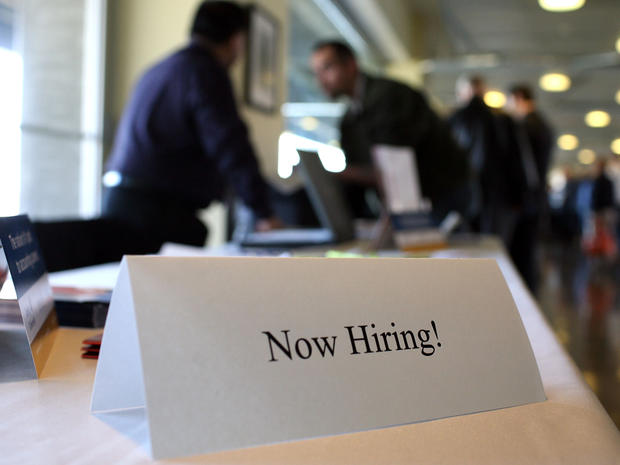Labor market went into deep freeze in March
The U.S. labor market last month may bring to mind a recent beloved animated movie: Frozen.
Chilled by wintry weather, employers added only 126,000 jobs in March, the Labor Department said Friday, far short of the 250,000 jobs forecasters had expected and the fewest payroll gains since late 2013. Job growth for January and February were also revised down by a total of 69,000 jobs. The nation's unemployment rate remained unchanged at 5.5 percent.
The latest employment numbers represent a sharp slowdown from the pace of job-creation in recent months, which had surged amid healthy consumer spending, falling gas prices and strong corporate profits. The weak labor data are also likely to stoke concerns that the economy's problems could extend beyond the weather.
"Payrolls were weaker than expected," said Jim O'Sullivan, chief U.S. economist with High Frequency Economics, in a note. "The report could add to fears that the trend in growth in slowing significantly, although there is no sign of weakening in jobless claims."
In 2014 the economy added nearly 3 million jobs, the most since 1999. That has brought the jobless rate, which during the Great Recession peaked at 10 percent in 2009, down from 6.6 percent a year ago. Some economists expect it to dip below 5 percent -- below the Federal Reserve's baseline for full employment -- by year-end.
But the economy has gone into hibernation in the early months of 2015, with harsh weather in the Northeast and Midwest affecting everything from construction to the housing sector. A rise in the value of the dollar against other currencies is also reducing overseas demand for goods by U.S manufacturers, denting growth. The decline in global oil prices, while a boon for consumers, is also hurting the domestic energy industry, spurring layoffs and spending cuts.
Forecasts suggest the nation's gross domestic product -- the total value of goods and services -- will come in below 2 percent in the first quarter. The economy grew 2.4 percent in 2014 and 1.9 percent the previous year. Economic activity is expected to pick up over the rest of 2015, with many forecasters predicting annualized growth of at least 3 percent.
While hiring has been strong, it has yet to deliver the kind of pay lift employees typically enjoy following a recession. The Labor Department said average hourly earnings for all non-farm employees rose 7 cents in March to $24.86. Over the past year, average hourly earnings have risen 2.1 percent. Following previous downturns, wage growth has reached 3 percent or 4 percent.
"Domestic wage pressures remain muted by substantial economic slack and firms' reluctance to raise the pace of hiring, which has historically preceded wage hikes," Citi analysts said in a recent research note.
Other metrics, such as the percentage of workers who are employed or looking for a job, also show that the labor market isn't fully healed.
With unemployment drifting closer to its so-called natural rate, meanwhile, the recovery may already have seen its strongest job gains. Given the economy's modest rate of expansion, analysts with Barclays Capital expect monthly payroll growth to average between 200,000 and 225,000 over the rest of the year.
The job market could face a key test later this year as the Fed decides whether to start raising interest rates, which have remained near zero since the country's economic collapse following the housing crash. Some experts fear that hiking rates too soon could cause growth, and the job market, to stall.
Paul Ashworth, chief U.S. economist with Capital Economics, said the March drop in job growth could persuade the central bank to delay the first rate hike until later this year, rather than moving in June as a number of forecasters have predicted.
